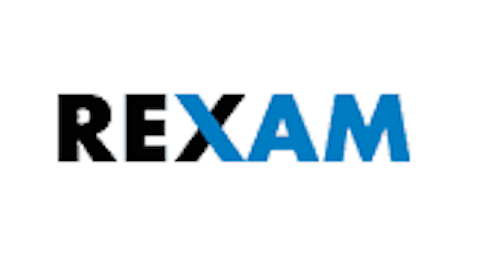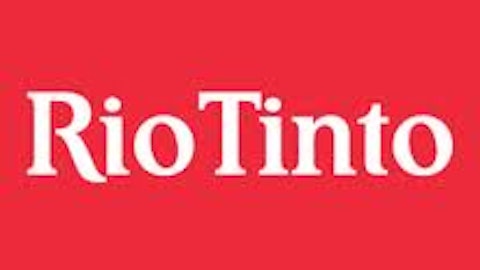
One way to invest in Australia is by purchasing leading companies that operate there, such as BHP Billiton Limited (ADR) (NYSE:BHP). Is it still a good time to invest in Australia? Let’s examine Australia’s progress and the future growth of its leading mining companies.
Is Australia’s economy slowing?
The recent decision of the Reserve Bank of Australia to cut the cash rate by a 0.25 percentage point to reach 2.75% — the lowest level in recent years — is a clear indication that the RBA is concerned about the future progress of this economy.
The recent rate reduction contributed to the sharp depreciation of the Aussie dollar that fell below the parity line with the US dollar for the first time since May 2012. If the RBA considers tapering the interest rate again in the near future, this could further pull down the Aussie dollar against leading currencies including Euro and US dollar. This will help leading exporters to increase their revenue from abroad.
The concerns for a slowdown are reflected in Australia’s GDP projected growth rate in 2013: the IMF estimates the real GDP growth rate will slip to an annual growth rate of 2.9% (year-over-year). In comparison, in 2012 the real GDP increased by 3.3%.
Despite these concerns, exports continue to rise: According to Australia’s trade balance report, exports of goods and services rose in the past several months and reached $25.7 billion in March (seasonally adjusted), which is 1% higher than February. A close examination reveals that the main goods that Australia exports are: metal ores and minerals (33.8% of total goods exported), and coal, coke and briquettes (15.6%). These two sectors account for nearly half of the total goods exported.
Therefore, one way to consider investing in Australia’s economy is to invest in its leading mining companies, such as BHP Billiton Limited (ADR) (NYSE:BHP) and Rio Tinto plc (ADR) (NYSE:RIO). These two giant companies mine iron ore, coal, and other metals among other commodities. But these companies haven’t done well in the stock market year-to-date: shares of BHP Billiton declined by 12.8%; shares of Rio Tinto tumbled by 22.7%. Poor performance in 2012 in terms of revenue growth and profitability at both companies may have contributed to the sharp decline in the stock prices.
In 2012, Rio Tinto plc (ADR) (NYSE:RIO) reported a near $3 billion loss compared with a $5.8 billion profit in 2011. Most of the drop in earnings was due to its aluminum business and its coal assets in Mozambique. Moreover, the sharp drop in the prices of several commodities in 2012, including aluminum and iron ore by 23% and 16% (year-over-year), respectively, may have also contributed to the sharp drop in profits.
Nonetheless, the company’s production in iron ore and aluminum rose by 4% and 6%, respectively, during the first quarter of 2013 (year-over-year). Further, the rise in the price of iron ore in the past six months is likely to help pull up this company’s profits in the first quarter of 2013.
A change in management might play out in favor of Rio Tinto plc (ADR) (NYSE:RIO)’s progress in the coming months.
But the main issues will be the future developments in Asia, including China and Japan, and commodity prices. According to the IMF, both China and Japan’s GDP are expected to rise by a sharper rate in 2013 versus 2012. China’s GDP is expected to rise by 8%; Japan’s GDP, by 1.6%.
BHP Billiton Limited (ADR) (NYSE:BHP), much like Rio Tinto plc (ADR) (NYSE:RIO), didn’t perform well in 2012: Its revenue fell by 14.1% in the second half of 2012 compared to the same time frame in 2011. BHP Billiton’s main product is iron ore, which accounted for nearly 28% of its revenue in 2012. Its revenue from iron ore fell by almost 25% (year-over-year).
But much like Rio Tinto plc (ADR) (NYSE:RIO), the company’s iron ore production rose in the first quarter of 2013 by 6%. If the demand for iron ore continues to rise, mainly as China’s economy keeps improving, the company’s revenue will reflect this gain.
Keep in mind that these two companies also offer a very reasonable dividends that boast of annual yields of 3.3% for BHP Billiton Limited (ADR) (NYSE:BHP) and 3.7% for Rio Tinto plc (ADR) (NYSE:RIO).
The last issue surrounds developments in the currencies markets, which I have referred to at the beginning of the article. If the Aussie will continue to devalue against leading currencies, it will be reflected in rising revenue and profitability at the above-mentioned companies.
Another option by which to invest in Australia’s economy is via an ETF such as iShares MSCI Australia Index Fund (NYSEMKT:EWA). Much like the above-mentioned companies, this ETF hasn’t performed well in the past several months: the ETF’s price only rose by 3.1 %(year-to-date). But the ETF holds not only mining companies such as BHP Billiton Limited (ADR) (NYSE:BHP) but also companies from other industries, such as Westpac Banking and Commonwealth Bank of Australia, that don’t trade in the NYSE. The ETF also offers a high dividend that currently produces an annual yield of 5.2%.
The bottom line
The above mentioned companies and ETF aren’t the only options to invest in Australia’s economy. Moreover, investing in mining companies is risky as they rely on the developments in the commodities markets, which are very volatile. But these companies are showing signs of recovery; if this positive trend continues, then these companies could be interesting investment options.
The article Is it Time to Bet on Australia? originally appeared on Fool.com.
Lior is a member of The Motley Fool Blog Network — entries represent the personal opinion of the blogger and are not formally edited.
Copyright © 1995 – 2013 The Motley Fool, LLC. All rights reserved. The Motley Fool has a disclosure policy.

